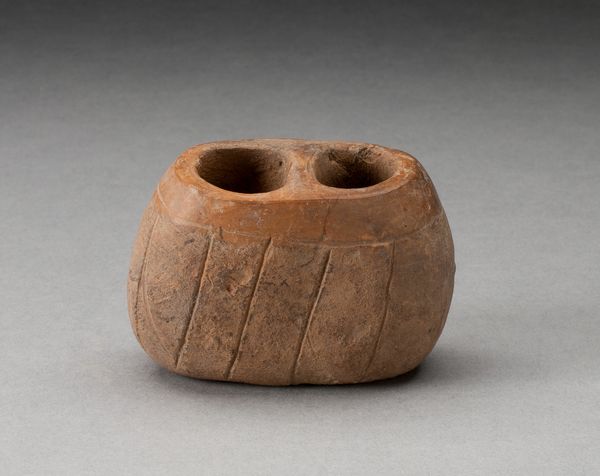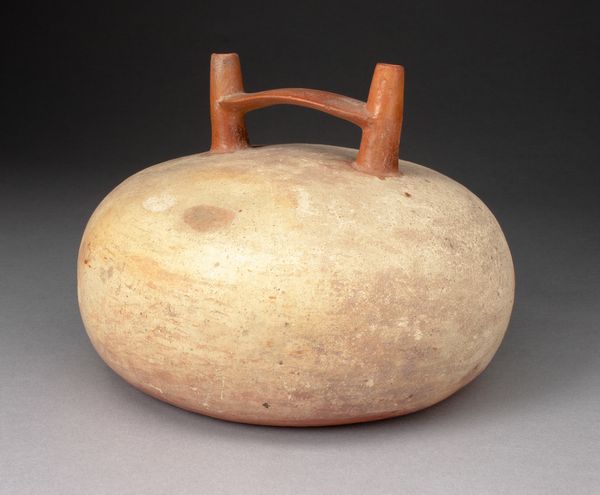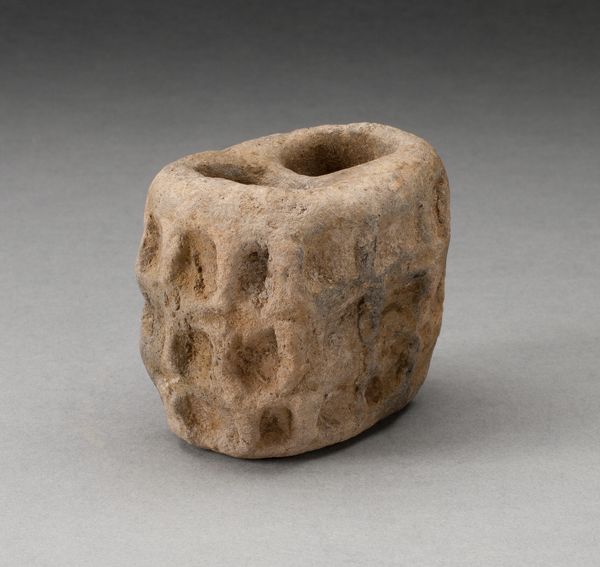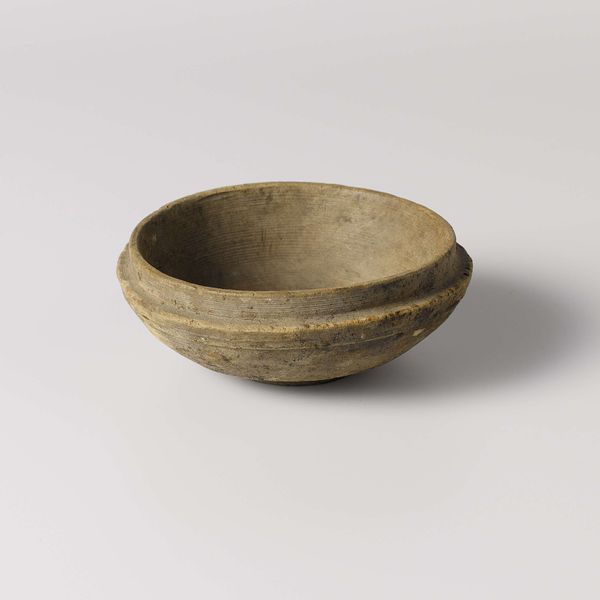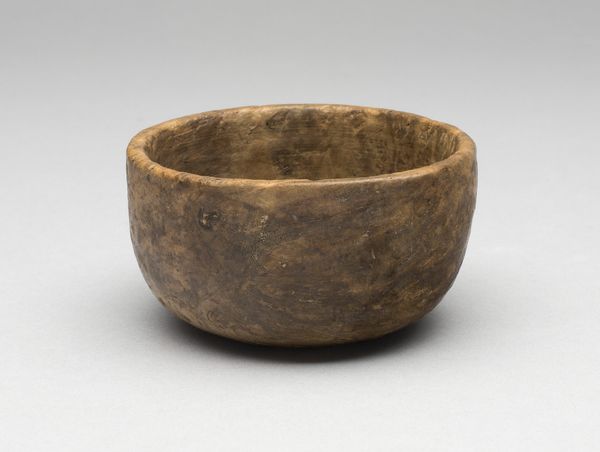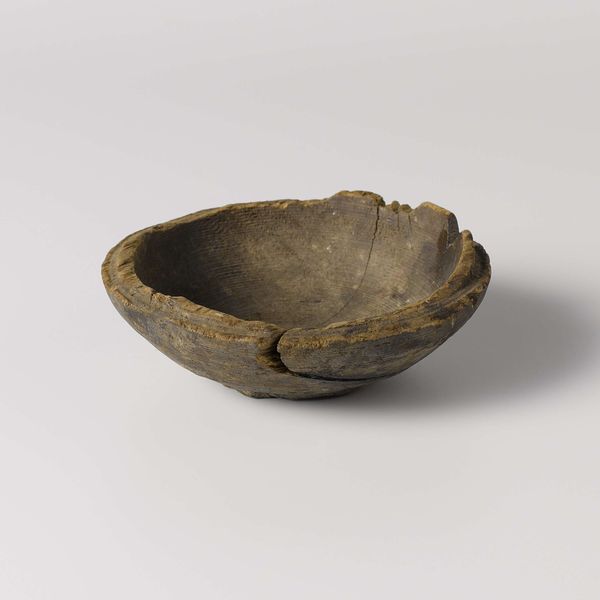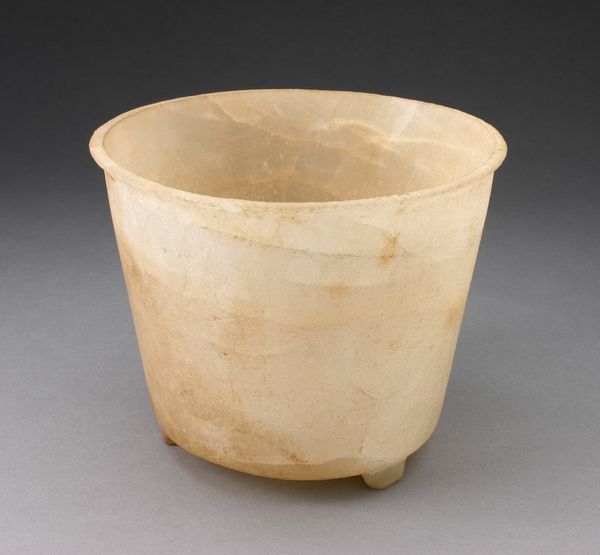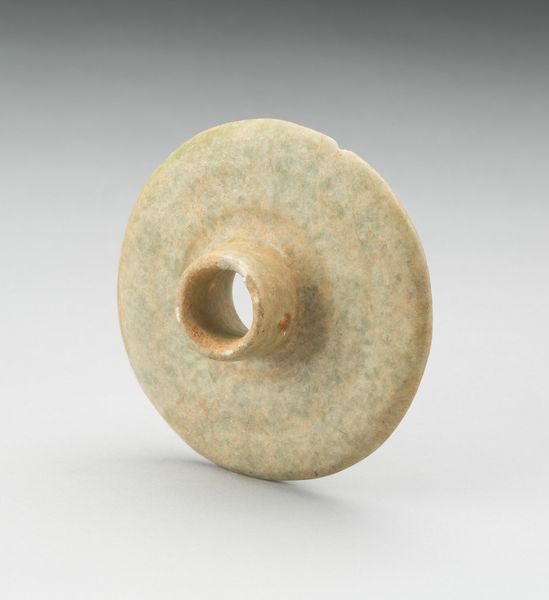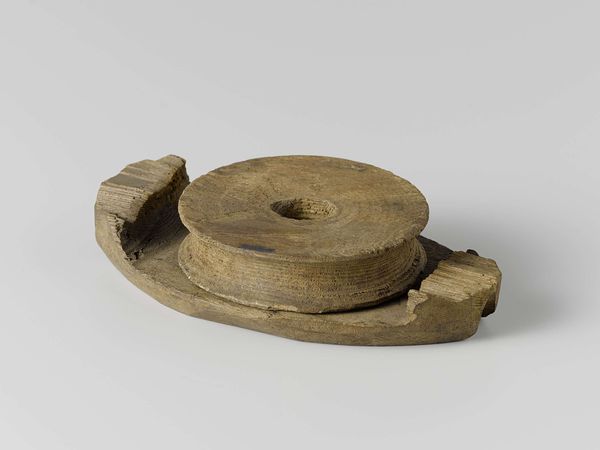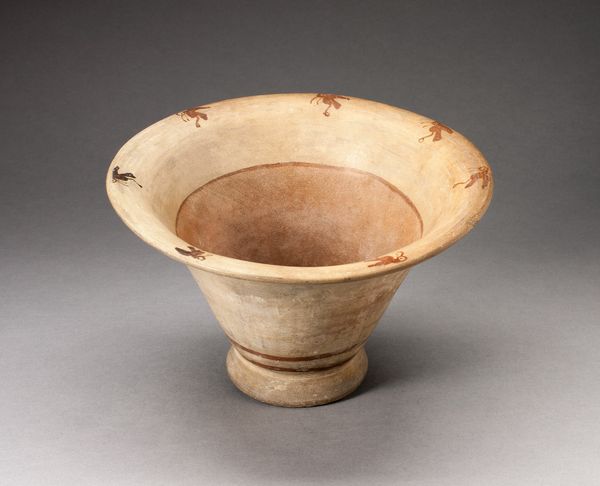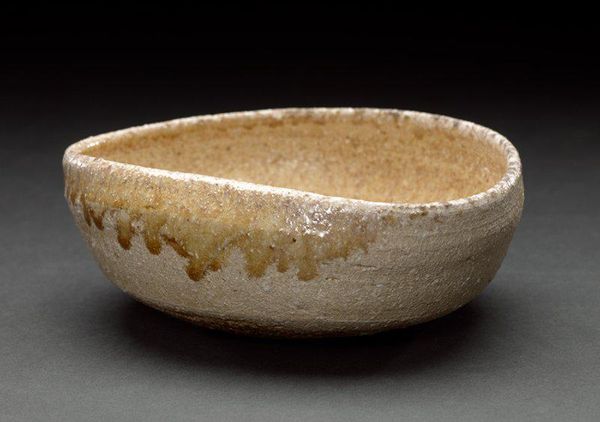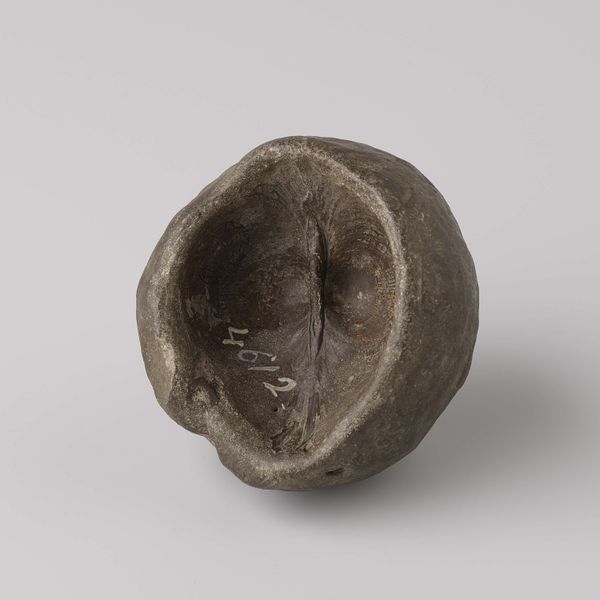
carving, sculpture
#
carving
#
form
#
sculpture
#
indigenous-americas
Dimensions: Diam. 15.2 cm (6 in.)
Copyright: Public Domain
Editor: So, this is a Chunkey Stone, made by Mississippian people sometime between 1200 and 1400. It’s displayed here at the Art Institute of Chicago. It is such a lovely form. How do you read it? Curator: I read it first and foremost through its materiality. Stone wasn't just lying around perfectly formed, ready to be made into a tool for leisure. Someone had to find the raw material, then skillfully and laboriously carve it. Editor: It must have been quite time-consuming. Curator: Exactly. Think of the social context surrounding its creation. This isn't merely a stone; it embodies countless hours of skilled labor and carries intrinsic value tied to the resources expended in its production. Moreover, a "game" piece allows me to reconsider binary notions about high art and everyday objects. Editor: Interesting, so this blends functionality with artistry. I suppose one wouldn't traditionally consider a "game" a laborious craft with its own sort of intrinsic artistic value. Curator: Precisely! And that "functionality" leads to more materialist questions. Was the carving process a communal effort? What did they use to carve this so precisely? How were these objects distributed or consumed? The questions reveal deeper social and economic structures. It challenges us to think about how "primitive" technologies required deep skill to exploit available materials. Editor: I hadn’t thought of it that way, that the carving itself shows the community structure. This makes me rethink how I value craftsmanship. Curator: It’s about moving beyond just aesthetics and interrogating the full picture of labor, resource management, and community practices embodied in even the simplest artifact. Editor: Right. I’m definitely leaving with a new perspective on the importance of the means of creation, thanks.
Comments
No comments
Be the first to comment and join the conversation on the ultimate creative platform.
